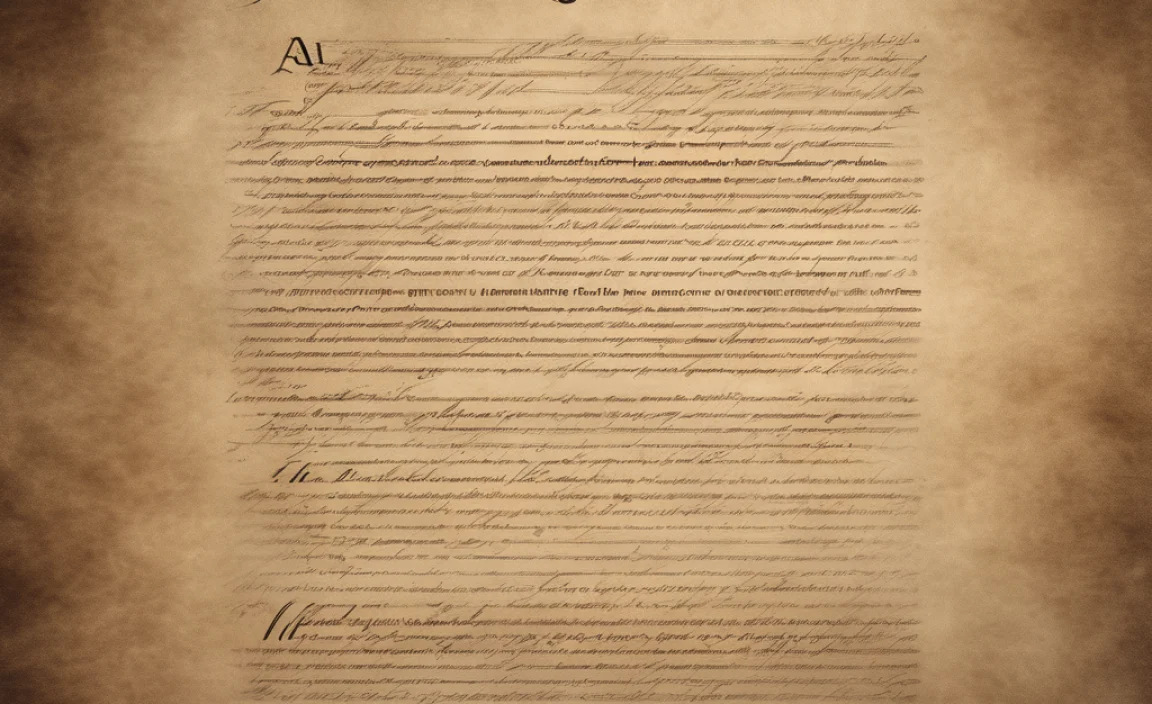The U.S. Constitution is one of the most significant documents in American history. It established the framework for the federal government, including its structure and the rights of citizens. Many people, when reading this iconic document, wonder about the font used to craft such a monumental text.
While modern fonts like Times New Roman and Comic Sans are there in today’s documents, the original U.S. Constitution was handwritten, not printed using a typeface.
However, the evolution of typography in legal and governmental documents can give us insight into how fonts have played a role in the history of the U.S. Constitution.
The Handwritten Origins Of the U.S. Constitution To Modern Fonts

The U.S. drafted its Constitution in 1787, long before the concept of fonts as we know them today. Instead of using a printing press or typeface, they used hand-lettered text. Two individuals were responsible for the writing.
Timothy Matlack, a skilled scribe, and other officials who helped shape the final appearance of the document. Matlack’s clear and elegant handwriting contributed to the readability of the Constitution, ensuring its accessibility and historical significance.
The Handwriting of the U.S. Constitution
The font used in the original document wasn’t a “font” in the digital sense. Instead, handwriting was a form of calligraphy, which was the standard method of writing in the late 18th century.
This handwriting style compares to a modern handwritten font, but with a more refined form. It resembles the calligraphy used in legal documents of that era. The style reflects the careful attention to detail required for creating such an important text.
As for the type of writing style used, the letters featured in the original U.S. Constitution resemble what we might now call a “Handwritten Font” or “Calligraphy.” Although not an exact match, the elegant strokes of the text evoke the aesthetic of traditional calligraphy. Some modern fonts, like P22 Declaration, draw inspiration from this historical script. Similar fonts appear in documents that aim to emulate the original style.
The Typeface of Today’s Constitution
The U.S. Constitution was originally handwritten. However, modern printed versions often use fonts like Times New Roman. Stanley Morison and Victor Lardent designed this serif typeface in 1931 for the Times of London. Times New Roman is a timeless and legible font. Its clarity makes it ideal for official documents, including printed versions of the Constitution. Times New Roman’s clear, readable design with varying weights and styles makes it ideal for conveying the clarity of constitutional law.
Comic Sans is often ideal for casual documents. However, it wouldn’t be suitable for a historical or legal document like the U.S. Constitution. Constitution. However, the font’s distinct style provides a striking difference from more traditional fonts like Times New Roman, which remain associated with government documents.
Typography in Government Documents
Typography has always played an essential role in making legal documents legible and accessible. The font provides consistency and ease of reading for citizens and government officials alike. The Constitution, including its 14th Amendment and 2nd Amendment, has undergone several changes over time, and fonts have evolved as part of that transformation.
Benjamin Franklin and George Washington signed the original document. They were instrumental in drafting the Constitution and shaping early American law. Their influence is still strong today. The fonts used in legal documents reflect the formality and clarity they helped establish.
The Importance of Equal Protection and Citizen Rights
Article I and Article II of the U.S. Constitution outline the structure and powers of the federal government, while Article V establishes the process for amending the document. These articles, along with others such as Article VI (which discusses the supremacy of federal law), have shaped the legal landscape for over two centuries. The use of clear and authoritative fonts, like Times New Roman, reflects the importance of equal protection and civil rights, principles enshrined in the Constitution.
The font choices used in official documents contribute to the legitimacy of the law and the principle of equal protection under the law. The fonts chosen by the Justice Department or officials during the drafting of amendments ensure that all citizens, including American citizens born under birthright citizenship, can read and understand their rights. The clarity of a typeface like Times New Roman enhances the authority of the federal government and the legal system.
The Legacy of U.S. Constitutional Fonts
The Constitution’s impact on typography is undeniable. Over the years, the U.S. Constitution has influenced not only American government but also global legal documents. Modern typefaces inspired by historical fonts, such as P22 Declaration, seek to recreate the timeless calligraphy of the original Constitution. The widespread use of fonts in legal documents ( Federal Prosecutors’ report or a White House statement) has roots in the foundational principles outlined in the Constitution.
Fonts like Times New Roman and similar fonts reflect the continued legacy of clarity and justice, echoing the importance of the U.S. Constitution as a document that governs American society. Even as fonts evolve, the principles of equality and justice that the Constitution represents remain a cornerstone of American society.
Conclusion
While the original U.S. Constitution was handwritten-one, the fonts used today to reproduce the document reflect its solemnity and the weight of its words. From Times New Roman to the handwritten fonts of historical figures like John Hancock, fonts are an integral part of the Constitution’s legacy. As the U.S. Constitution continues to guide American citizens and the federal government, its influence on modern typography remains a testament to the power of clear, legible, and meaningful design.
FAQs
What Font Was Used In The Original U.S. Constitution?
Timothy Matlack and others handwrote the U.S. Constitution in a form of calligraphy.
What Modern Fonts Are Used For The U.S. Constitution?
Today, Times New Roman is often shines in printed versions of the Constitution.
Who Wrote The U.S. Constitution?
Timothy Matlack, a skilled scribe wrote the final version of the Constitution.
What Font Is Similar To The Handwriting In The U.S. Constitution?
P22 Declaration is a font from the historical handwriting we often see in the Constitution.
Why Is Times New Roman Used In Legal Documents?
Times New Roman is legible and professional, making it ideal for legal documents.
Is Comic Sans Used In Legal Documents?
Comic Sans is typically not ideal in formal legal documents due to its casual style.
What Do Articles I And II In The U.S. Constitution Cover?
Article I covers the powers of Congress, while Article II outlines the powers of the President.
What Font Was Used For The Bill Of Rights?
The Bill of Rights, like the U.S. Constitution, was handwritten one but is often printed in Times New Roman today.
What Role Does Typography Play In Legal Documents?
Typography ensures that legal documents are readable and accessible, reflecting the document’s importance and authority.









